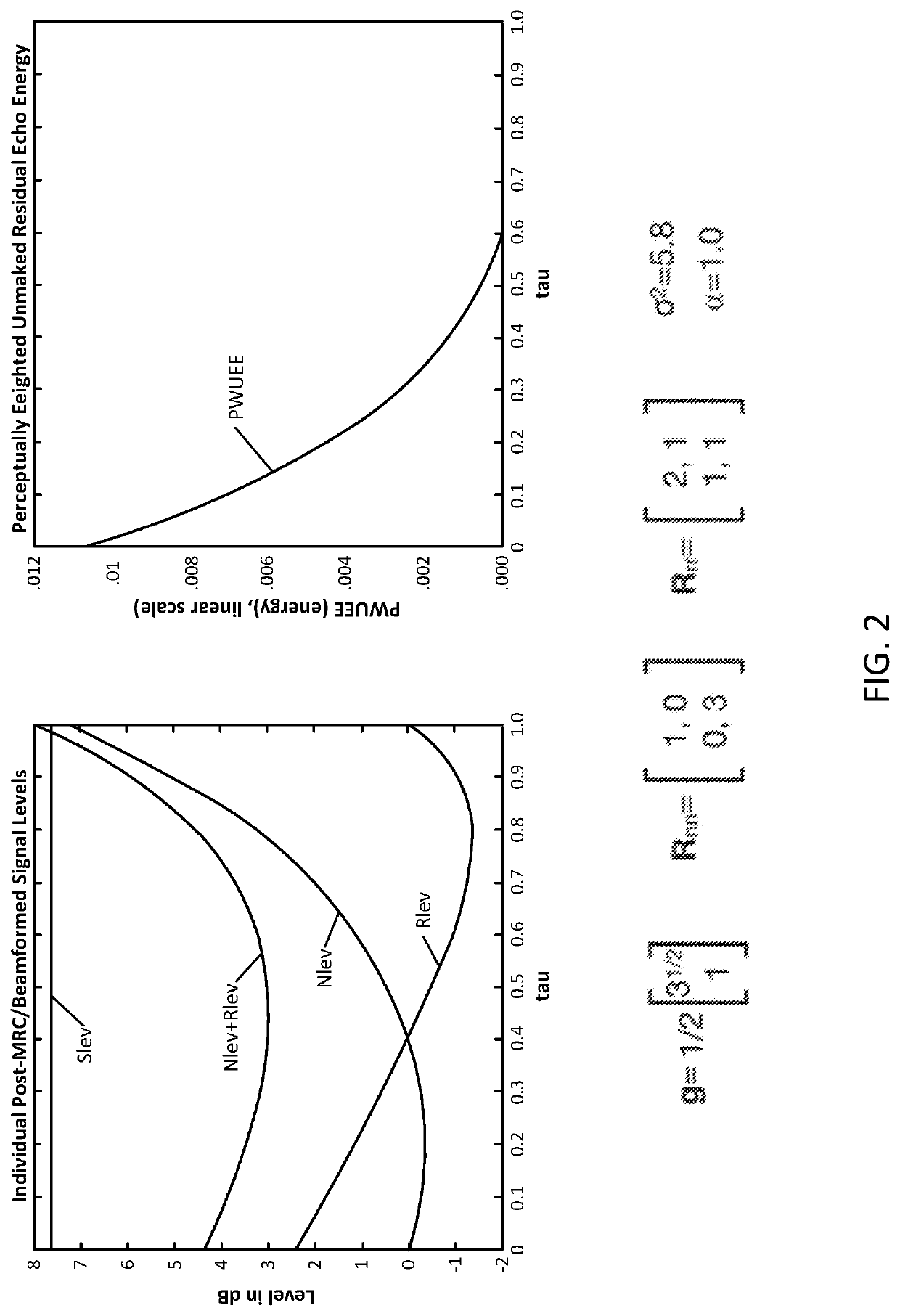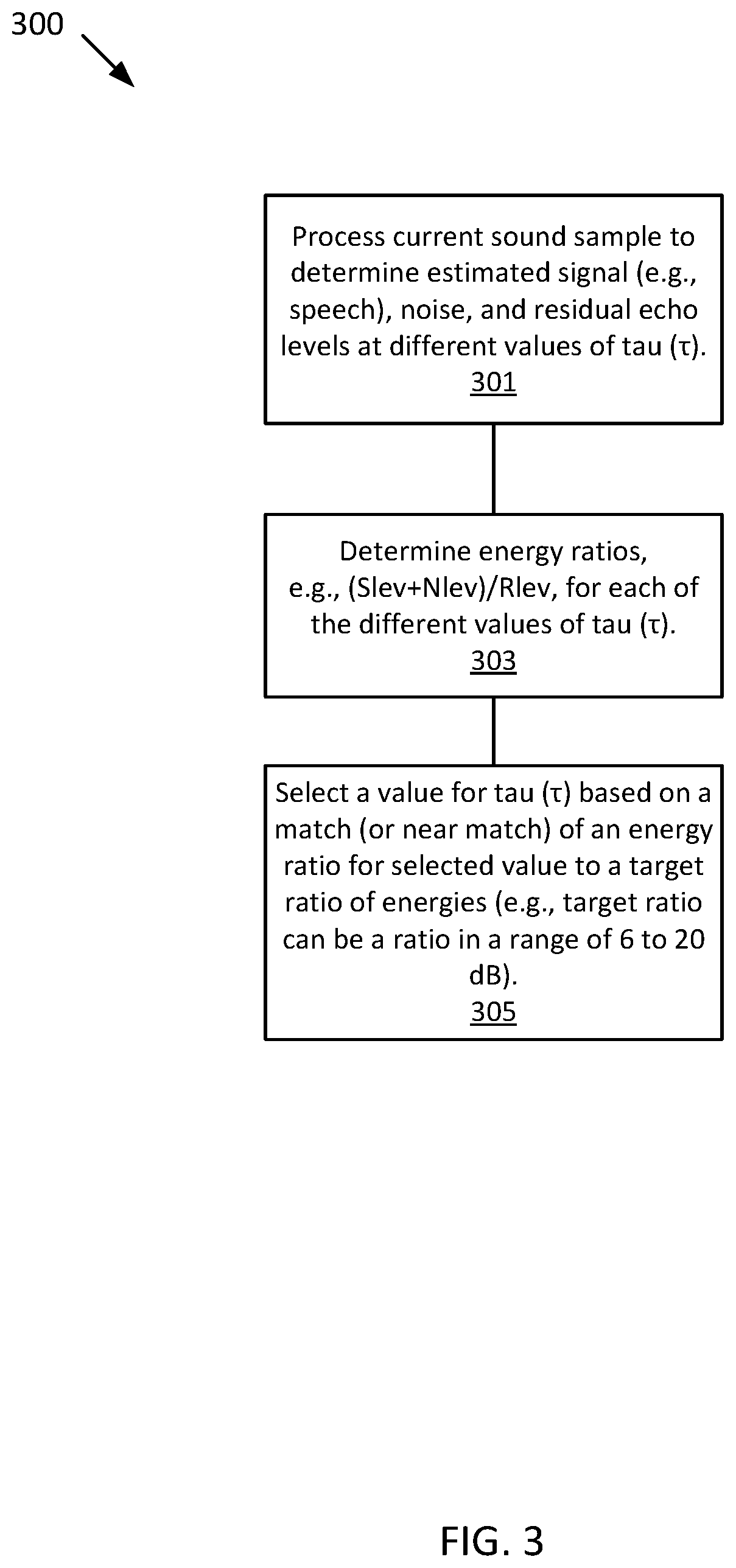Joint spatial echo and noise suppression with adaptive suppression criteria
a spatial echo and noise suppression technology, applied in the field of audio signal processing, can solve the problems of suppression affecting all components, echo can be highly disruptive, and the technique does not simply maximize snr, so as to achieve the effect of skewing the balance, maximizing snr, and reducing the noise of the signal
- Summary
- Abstract
- Description
- Claims
- Application Information
AI Technical Summary
Benefits of technology
Problems solved by technology
Method used
Image
Examples
Embodiment Construction
[0023]Various systems and aspects will be described with reference to details discussed below, and the accompanying drawings will illustrate the various aspects. The following description and drawings are illustrative and are not to be construed as limiting. Numerous specific details are described to provide a thorough understanding of various aspects. However, in certain instances, well-known or conventional details are not described in order to provide a concise discussion of aspects.
[0024]Reference in the specification to “one aspect” or “an aspect” means that a particular feature, structure, method or characteristic described in conjunction with the aspect can be included in at least one implementation. The appearances of the phrase “an aspect” in various places in the specification do not necessarily all refer to the same aspect. The processes depicted in the figures that follow are performed by processing logic that comprises hardware (e.g. circuitry, dedicated logic, etc.), s...
PUM
 Login to View More
Login to View More Abstract
Description
Claims
Application Information
 Login to View More
Login to View More - R&D
- Intellectual Property
- Life Sciences
- Materials
- Tech Scout
- Unparalleled Data Quality
- Higher Quality Content
- 60% Fewer Hallucinations
Browse by: Latest US Patents, China's latest patents, Technical Efficacy Thesaurus, Application Domain, Technology Topic, Popular Technical Reports.
© 2025 PatSnap. All rights reserved.Legal|Privacy policy|Modern Slavery Act Transparency Statement|Sitemap|About US| Contact US: help@patsnap.com



